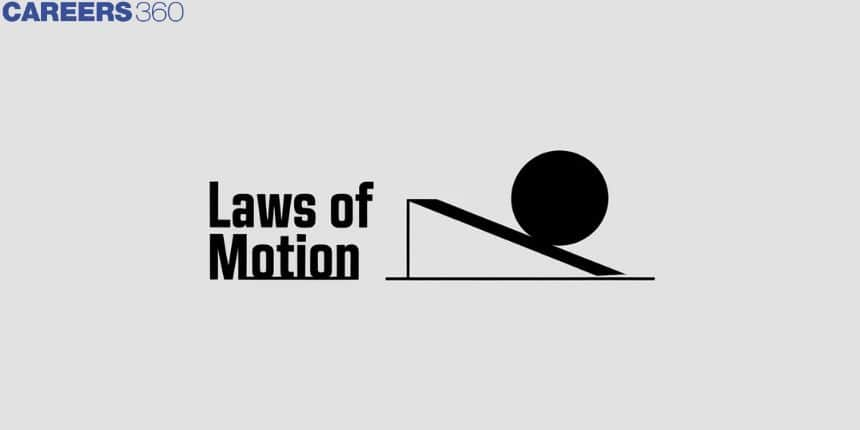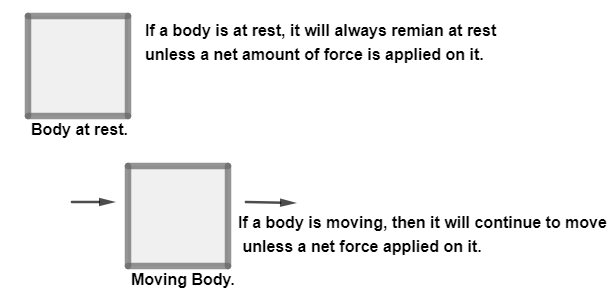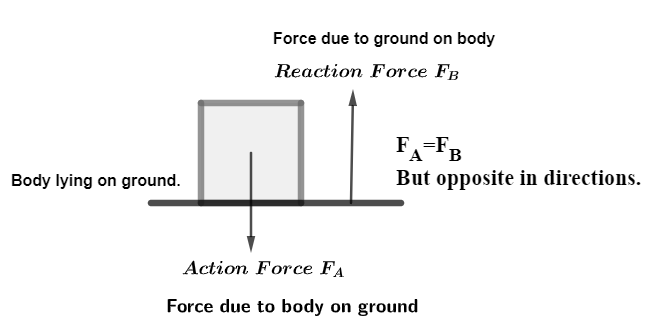Laws of Motion - First, Second, Third Law of Motion
The motion principles described by Sir Isaac Newton lay the groundwork of classical mechanics and describe how objects are moved and how they interact. These laws- the first, second, and third, control things such as the motion of the planet or the working of simple machines. It is possible to observe them for instance in riding a car, throwing a ball, or even in walking, they are thus very essential in understanding and predicting motion.
This Story also Contains
- What is the Newton’s 1st Law of Motion?
- What is Newton's Second Law of Motion?
- Newton’s 3rd Law of Motion

What is the Newton’s 1st Law of Motion?
According to Newton's first law of motion, a moving body will keep moving as long as it’s not acted by any external force and a body at rest will keep being at rest unless acted by some amount of external force. This tendency of a body to remain moving or remain at rest is known as Inertia. This is Newton's first law of motion. It is also called the law of inertia.

The concept of Inertia was first discovered by scientist Galileo Galilei and the ability of a body to keep itself at rest is called Inertia of rest whereas The tendency of the body to keep moving is called Inertia of motion.
Examples of Newton’s First Law of Motion
The most common examples of Newton’s first law of motion are listed as:
When car brakes are applied suddenly, we feel a force towards the front of the car. This is because of Newton's first law of motion as a car and we were moving and when the car came to rest after applying brakes we kept moving forward due to inertia of motion.
When we move a cloth consisting of dust with some force we see that dust particles from the cloth come out, this is also due to the first law of motion as dust particle and cloth both were at rest but suddenly cloth came at motion due to applied force and dust particles remain in their position due to inertia of rest. It's also an example of Newton's first law of motion.
The motion of heavenly planets is due to the inertia of motion because once they are set in motion there is no external force applying to them so they are moving at their constant speed is also an example of Newton’s first law of motion.
| Related Topics |
What is Newton's Second Law of Motion?
According to Newton's second law of motion, if any amount of force is applied on a body externally then this force will always be equal to the change that takes place in the momentum of a body.
Momentum is defined as the product of the mass and velocity of a body and mathematically written as $p=m v$ where p is the momentum vector and v is the velocity vector.

Now, from the definition of Newton’s second law of motion, we know that if force F vector is applied on the body and change in momentum is written as m dv/dt and this quantity will be equal to force written as F=mdvdt and we know that rate of change in velocity is equal to acceleration produced in the body so we can write Force applied on the body as F=ma Hence, Newton’s second law of motion is simply written as $\mathrm{F}=\mathrm{ma}$. This is known as Newton's second law of motion formula.
Examples of Newton’s Second Law of Motion:
Some of the most common examples of Newton’s second law of motion are listed:
When a cricketer hits a ball, the ball changes its direction and velocity, this is because of Newton’s second law of motion as the bat hits the ball with some force and force is equal to the change in momentum of the ball hence, the ball gets direction in the direction of force applied by the bat.
When we apply some force by pushing or pulling on objects like tables at rest, the objects get displaced from their position in the direction of the applied force, this is also due to Newton's second law of motion as the force applied on the objects changes the magnitude and direction of acceleration produced in the body.
When a moving charge particle enters in the presence of a magnetic field it experiences magnetic force and hence due to this force, the charged particle changes its direction of motion and also has a change in its momentum which is only due to Newton's second law of motion.
Newton’s 3rd Law of Motion
According to Newton’s third law of motion, if we first body applies some force to the second body then the second body will also exert the same amount of force on the first body but in the opposite direction or we can say when there is an action force by a body there will also be a reaction force which will have a direction opposite to that of action force.

Examples of Newton’s Third Law of Motion
Some of the most common examples of Newton’s third law of motion are listed as:
When objects are placed over other objects such as a notebook placed on a table or a human standing on the ground then the action force is the force acted by the notebook on the table in a downward direction and the force acted by the human body on the ground is the force of gravity and its equal to the reaction force acted by table on the notebook and by the ground on the human body but in the opposite direction which is upwards. and it's due to Newton’s third law of motion.
When we apply some force on a wall, the wall also exerts the same amount of force but opposite in direction is also an example of Newton's third law of motion.
Also, read
Frequently Asked Questions (FAQs)
From, Newton’s second law of motion we know that force acting on a body is defined as the product of the mass of the body and acceleration acting on the body which is written as F=ma here we have given that, m=2kg and a=a=6ms-2 so on putting the values, the force can be calculated as F=2×6=12Kgms-2. Hence, the force acting on the body is 12Newton.
The three laws of motion were introduced by S. Isaac Newton hence they are also called Newton’s laws of motion. Newton’s first law of motion says that a moving body will continue to move and a body at rest will always remain at rest as long as they are not affected by any amount of external force. Newton’s second law of motion says that the change in momentum of a body with respect to time is always equal to the applied force on a body. Newton’s third law of motion says that for every action force acting on a body in a given direction there exists a reaction force acting on the same body with the same amount of force but opposite in direction.
Newton’s Second law of motion gives the relationship between three physical quantities of a body namely Force acting on a body force vector, the acceleration produced in a body acceleration vector, and mass of the body, and these quantities are related as F=ma This relation is known as Newton's second law of motion formula. and Newton's second law of motion is also called Balance of Linear momentum.
Few most common examples of newton’s laws of motion are:
Opening and closing a door by pushing or pulling it by mechanical force which changes the direction of the door is an example of Newton's first law of motion as well as Newton's second law of motion.
Hitting a football by a player changes the direction and velocity of football is an example of Newton's second law of motion.
A laptop resting on a table exerting a force of its weight on the table in a downward direction as an active force and a table exerting the same amount of reaction force on a laptop in the upward direction is an example of Newton's third law of motion.
Newton’s first law of motion is based upon the concept of inertia, and it states that anybody as long as unaffected by any external force will keep the same inertia such that a body having inertia of rest will keep at rest and a body having inertia of motion will keep moving. And Newton’s first law of motion is sometimes also called the Law of Inertia.